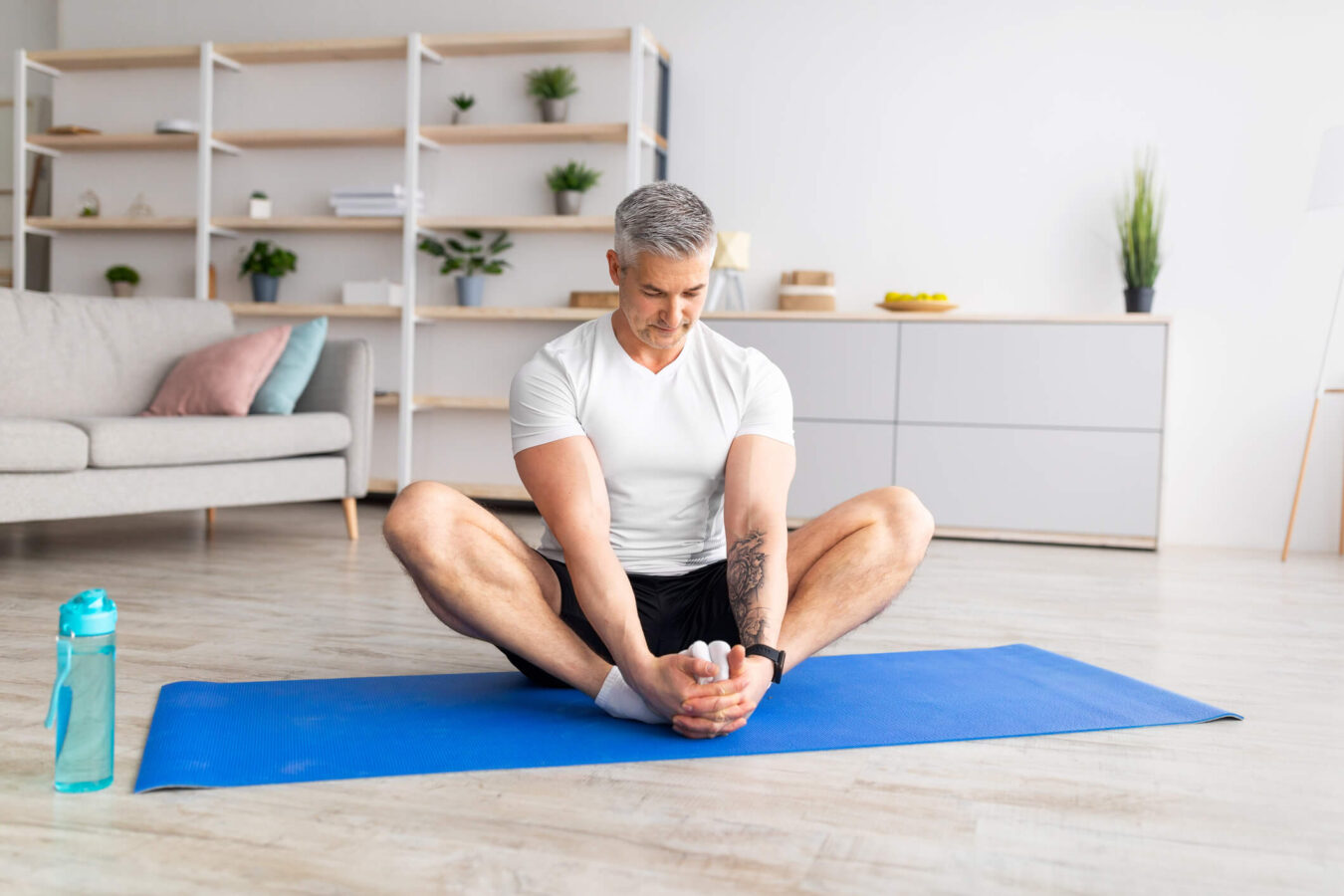
Medically reviewed by Misty Seidenburg
Overstretching or tearing of the groin muscles can occur from a single trauma, like a fall or lifting a heavy object. Repetitive stress from other hobbies or job tasks can also damage these tissues. Groin pain is a common issue, accounting for 2-5 percent of all sports injuries. Whether you’re into soccer, basketball, or baseball— even if you’re not involved in these sports, you could still be at risk of a pulled groin.
However, you can often relieve minor groin pain, stiffness, and swelling by performing these simple yet effective exercises and groin stretches. These movements will help relieve groin strain symptoms, strengthen the muscles, and stabilize the pelvis to lower the risk of injury.
The groin is the area where the lower part of the abdomen meets the upper thighs. It is comprised of several muscles that work together to move the legs.
Groin pain refers to discomfort or abnormal sensations in this area, typically on one side of the body or the other. Although males are most susceptible to groin pain, a preventive stretching and exercise program is beneficial for all genders.
Muscle or tendon strain (pulled groin) is the most common source of groin pain. However, other potential causes include nerve irritation, bone fractures, systemic disease, and urological/ gynecological conditions. Secondary groin pain can also be a complication of surgery to treat different conditions.
Because hip and groin pain can be a sign of a severe groin injury, it’s essential to seek medical attention to determine the cause. Some injuries require advanced treatment, including surgical intervention.
These stretches and exercises promote healthy movement, reduce groin pain, and help prevent injuries.
Include image or infographic examples
When stretching, it’s important to remember a few key tips to get the maximum benefits without overstretching, which can lead to injury.
The American College of Sports Medicine (ACSM) recommends that healthy adults should stretch all major muscle groups at least 2 to 3 times per week, although daily stretching is most beneficial.
If you are diagnosed with a pulled groin or want to prevent groin injuries, physical therapy can help you feel and move better. By combining therapeutic exercise and stretching with hands-on therapies, physical therapists help clients improve strength and mobility.
Therapy can generally be started as soon as a day or two after a groin injury. In fact, gentle therapeutic movements can be the most effective form of treatment for groin strains and many other musculoskeletal conditions. To schedule an initial evaluation for groin pain, call, locate your nearest provider, or request an appointment online today.